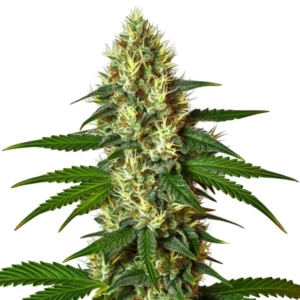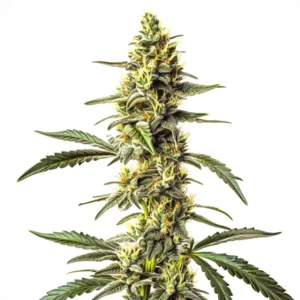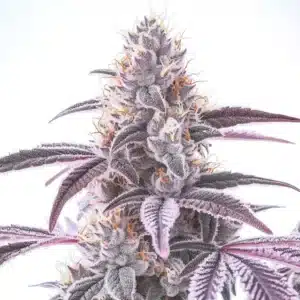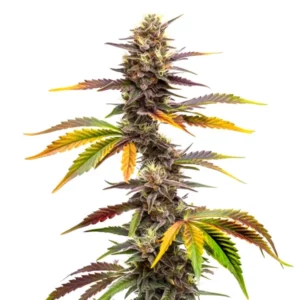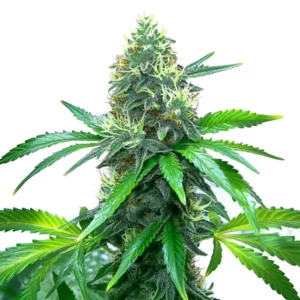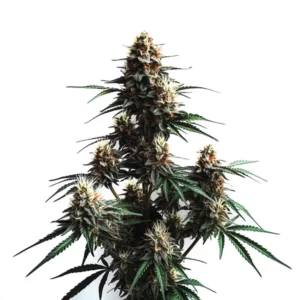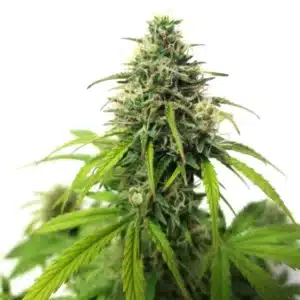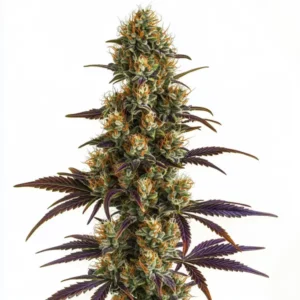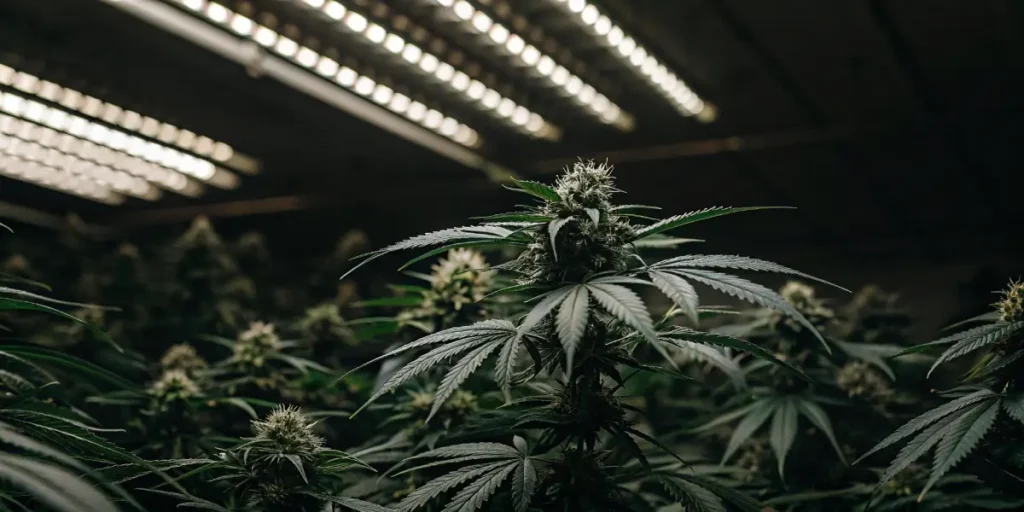
Regenerative Cannabis Cultivation
Regenerative cannabis cultivation is changing the game for both first-time growers and seasoned experts. By focusing on sustainable practices in cannabis farming, growers are not only producing healthier plants but also giving back to the earth. This method emphasizes natural cycles and biodiversity in cannabis farming to create a thriving ecosystem.
Embracing regenerative agriculture techniques for cannabis means adopting organic soil management for cannabis. It includes using compost, cover crops, and minimal tillage. These methods help nurture the soil, which is the foundation of any successful crop. Growers using eco-friendly cannabis cultivation methods often see improvements in plant health and yield.
Recommended Strains
Carmen 2.0
|
|
THC | 10% - 15% (Low) |
|
|
Type | Feminized |
|
|
Yield | Medium |
|
|
Phenotype | 30% Indica / 70% Sativa |
CBD Harlequin (1:25)
|
|
CBD | 20% – 25% (High) |
|
|
Type | CBD Feminized |
|
|
Yield | Medium |
|
|
Phenotype | 55% Indica / 45% Sativa |
Choosing the right cannabis strains is also crucial. Strains like Blue Dream, known for its resilience, thrive in a regenerative setup. Such strains adapt well to organic practices and can produce robust yields. Exploring these options can lead to a more rewarding growing experience.
Organic Soil Management for Cannabis
Organic soil management for cannabis involves nurturing the earth without synthetic chemicals. Composting is a cornerstone of this practice. By recycling organic waste into nutrient-rich compost, growers enhance soil fertility naturally. This not only boosts plant growth but also supports microbial life in the soil.
Cover crops are another essential element. These are plants grown to cover the soil rather than for harvest. They prevent erosion, improve soil structure, and add nutrients. Legumes, for example, fix nitrogen in the soil, benefiting cannabis plants. This symbiotic relationship is a key part of regenerative cannabis cultivation.
Additionally, organic soil management for cannabis ensures a balanced ecosystem that supports beneficial organisms. This approach minimizes soil degradation and enhances water retention, making it crucial for sustainable practices in cannabis farming. Healthy soil leads to strong, resilient cannabis plants that require fewer interventions.
The use of organic mulches can further enhance soil management. Mulches help maintain soil moisture, suppress weeds, and slowly decompose to add organic matter back into the soil. This complements the larger goal of regenerative cannabis cultivation by promoting a self-sustaining agricultural system.
Eco-friendly Cannabis Cultivation Methods
Eco-friendly cannabis cultivation methods prioritize reducing environmental impact. One practical approach is using rainwater harvesting systems. Collecting rainwater reduces reliance on municipal water supplies and conserves this vital resource. It’s a sustainable solution that every grower can implement.
Natural pest control is also crucial. Instead of chemical pesticides, introducing beneficial insects like ladybugs can manage pests effectively. These insects prey on common cannabis pests, maintaining a balanced ecosystem without harmful chemicals. It’s a win-win for the plants and the environment.
Another efficient method is crop rotation. By rotating cannabis with other crops, soil nutrients are balanced, and diseases are kept at bay. This practice is not only eco-friendly but also boosts yields in the long run. Such methods are integral to regenerative cannabis cultivation.
Incorporating solar energy into cannabis operations is another eco-friendly method. Solar panels can power grow lights and other equipment, reducing reliance on non-renewable energy sources. This shift to renewable energy aligns with sustainable practices in cannabis farming and reduces the carbon footprint.
Using biodegradable materials for plant support and packaging also contributes to eco-friendly practices. Biodegradable twines and pots minimize plastic waste and decompose naturally, supporting the environment. These small changes collectively contribute to a more sustainable cannabis cultivation model.
Promos & Deals
Biodiversity in Cannabis Farming
Biodiversity in cannabis farming enhances ecosystems and strengthens plant resilience. Integrating a variety of plants in the growing area attracts beneficial insects and promotes a healthy ecological balance. This biodiversity helps in pest control and improves soil health.
Companion planting is a practical example. Growing plants like marigolds alongside cannabis can deter pests naturally. Marigolds release substances into the soil that repel nematodes, protecting cannabis roots. This simple yet effective method exemplifies the power of biodiversity.
Biodiversity also plays a critical role in pollination. A diverse environment attracts a range of pollinators, such as bees and butterflies, which enhance the reproductive success of cannabis plants. This natural process is vital for the long-term sustainability of cannabis farming.
Furthermore, biodiversity contributes to climate resilience. Diverse plant systems are better equipped to withstand climate fluctuations, such as droughts or heavy rains. This resilience ensures that cannabis farms remain productive even in the face of environmental challenges.
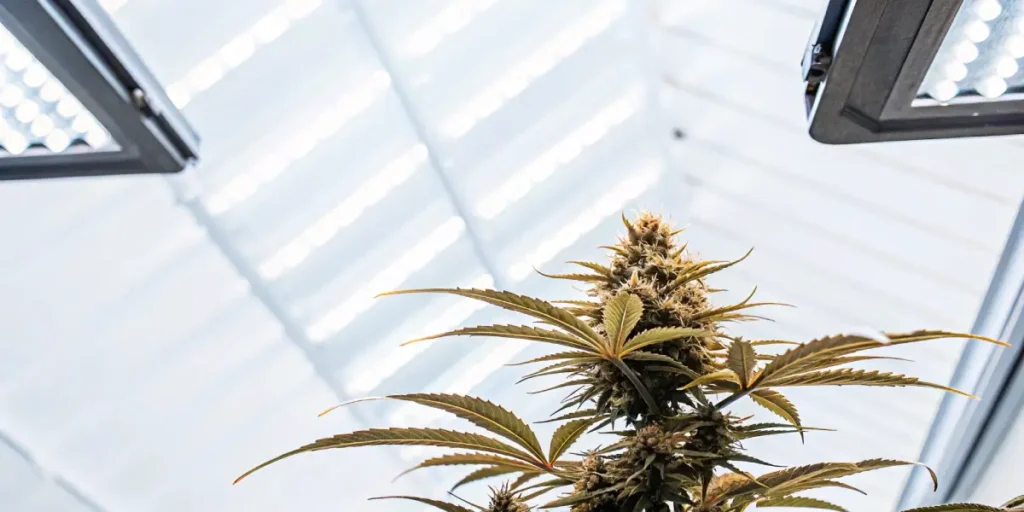
Regenerative Agriculture Techniques for Cannabis
Regenerative agriculture techniques for cannabis include practices like minimal tillage. This technique reduces soil disturbance, preserving its structure and the organisms living in it. Healthy soil is less prone to erosion and retains moisture better, crucial for cannabis growth.
Another technique is integrating livestock into the cannabis farm. Animals like chickens can manage weeds and pests naturally. They also provide manure, enriching the soil with nutrients. This practice mimics natural ecosystems, embodying the principles of regenerative cannabis cultivation.
Intercropping is an innovative regenerative agriculture technique for cannabis. By growing different crops in proximity, growers can enhance soil fertility and suppress weeds naturally. This technique promotes a synergistic relationship among plants, leading to more robust cannabis growth.
Regenerative cannabis cultivation also benefits from agroforestry practices, where trees are integrated into the farming system. Trees provide shade, improve soil health, and offer habitat for beneficial organisms. This integration creates a dynamic agricultural ecosystem that supports sustainable farming practices.
Choosing the Right Strains for Regenerative Cultivation
Not all cannabis strains are created equal, especially when it comes to regenerative cultivation. Strains that are resilient and adaptable to organic practices tend to perform best. OG Kush is a classic example, known for its strength and ability to thrive in diverse conditions.
These strains often require less intervention, making them perfect for eco-friendly cannabis cultivation methods. Their natural vigor allows them to resist pests and diseases better, reducing the need for external inputs. This aligns perfectly with the goals of sustainable practices in cannabis farming.
Another key factor in selecting strains for regenerative cannabis cultivation is their growth cycle. Strains with shorter flowering times can be more efficient in resource use, making them well-suited for environments prioritizing sustainability and low impact.
Consideration of local climate conditions is also vital when choosing strains. Strains that are naturally adapted to local weather patterns will perform better with regenerative agriculture techniques. This strategic selection ensures successful cultivation with minimal ecological impact.
Practical Tips for Successful Regenerative Cannabis Cultivation
Start small. Focus on building healthy soil first. Use local organic materials for compost and cover crops. Gradually implement eco-friendly cannabis cultivation methods like rainwater harvesting and natural pest control.
Monitor soil health regularly. Conduct simple tests to assess nutrient levels and soil structure. This helps in making informed decisions about soil amendments and crop rotation. Engaging with the land is crucial for regenerative cannabis cultivation.
Utilize technology to monitor environmental conditions. Sensors can provide real-time data on soil moisture and temperature, helping optimize growing conditions. This integration of technology supports sustainable farming practices and enhances crop management.
Continuously educate yourself on best practices and stay updated with innovations in regenerative cannabis cultivation. Attending workshops, reading current literature, and participating in webinars can provide valuable insights and keep growers informed about the latest advancements.
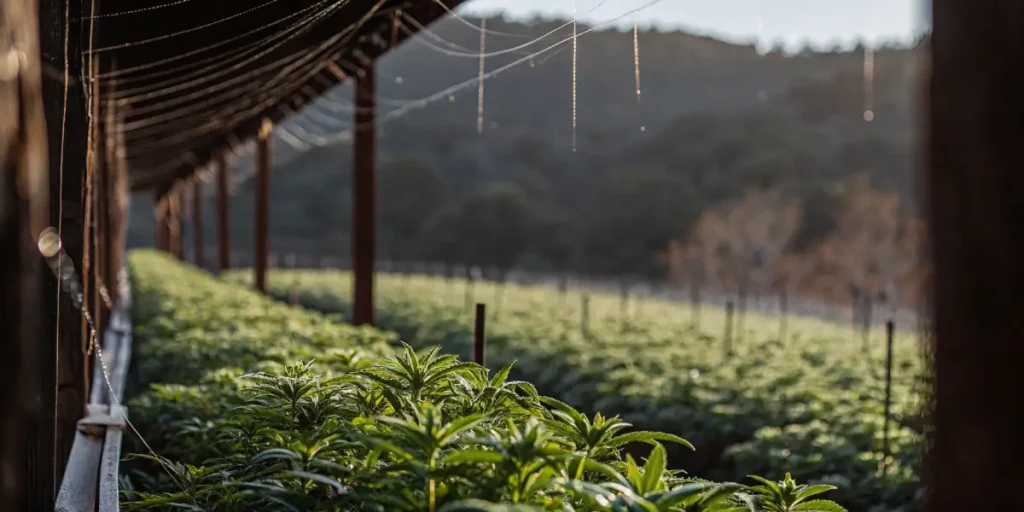
FAQs
What is regenerative cannabis cultivation?
Regenerative cannabis cultivation is a holistic approach to farming that focuses on improving soil health, increasing biodiversity, and producing cannabis sustainably. It involves techniques that restore and enhance the ecosystem rather than deplete it.
This method uses natural cycles and organic practices, such as composting, cover cropping, and minimal tillage. The goal is to create a self-sustaining environment that benefits both the plants and the planet, ensuring long-term agricultural viability.
Regenerative cannabis cultivation not only benefits the environment but also improves the quality of the cannabis produced. Plants grown under these conditions often have better flavor profiles and higher concentrations of beneficial compounds.
Moreover, this cultivation method supports the local economy by encouraging the use of local resources and reducing dependency on imported fertilizers and pesticides. This localized approach strengthens community ties and promotes economic sustainability.
How does organic soil management benefit cannabis plants?
Organic soil management for cannabis involves nurturing the soil with natural inputs instead of synthetic fertilizers and chemicals. This practice enhances soil structure, fertility, and microbial activity, leading to healthier and more resilient cannabis plants.
By using compost, cover crops, and rotating crops, growers improve the soil’s ability to retain nutrients and water, reducing the need for external inputs. This results in stronger plants with better yields and quality.
Organic soil management for cannabis also fosters a rich microbial ecosystem. Beneficial microbes help break down organic matter, releasing nutrients that plants can easily absorb. This natural nutrient cycling is a cornerstone of regenerative cannabis cultivation.
Healthy soil also acts as a carbon sink, capturing atmospheric carbon dioxide and mitigating climate change. This environmental benefit underscores the importance of integrating organic soil management into regenerative agriculture techniques for cannabis.
What are the advantages of using eco-friendly cannabis cultivation methods?
Eco-friendly cannabis cultivation methods help reduce environmental impact and promote sustainability. Techniques like rainwater harvesting, natural pest control, and crop rotation conserve resources and enhance plant health.
These methods also foster biodiversity, which can improve pest management and pollination. By reducing reliance on chemicals and synthetic inputs, growers contribute to a healthier ecosystem and produce cleaner, safer cannabis.
Eco-friendly methods can also lead to cost savings over time. Reducing chemical inputs and optimizing water use lowers operational costs, providing economic benefits alongside environmental ones.
Furthermore, employing eco-friendly practices enhances the marketability of cannabis products. Consumers increasingly prefer sustainably grown cannabis, giving eco-conscious growers a competitive edge in the marketplace.
Why is biodiversity important in cannabis farming?
Biodiversity in cannabis farming supports a balanced ecosystem, enhancing pest control and soil health. A diverse range of plants and organisms creates a resilient environment that can adapt to changes and stressors.
This diversity attracts beneficial insects and microorganisms, reducing the need for chemical interventions. It also improves soil fertility and structure, leading to healthier cannabis plants and higher yields.
Biodiversity also contributes to genetic diversity among cannabis plants. A genetically diverse crop is better able to cope with diseases and environmental stressors, ensuring consistent yields and quality.
Moreover, biodiversity in cannabis farming supports natural pollination processes, which are essential for seed production and genetic variation. This natural pollination enhances the evolutionary potential of cannabis crops.
What cannabis strains are best suited for regenerative cultivation?
Strains like Blue Dream, Gelato, and OG Kush are well-suited for regenerative cultivation due to their resilience and adaptability. These strains thrive in organic environments, requiring less intervention and resisting pests and diseases effectively.
Choosing the right strains is crucial to maximizing the benefits of regenerative agriculture techniques for cannabis. These strains align well with sustainable practices, ensuring robust growth and quality yields.
When selecting strains, consider their terpene profiles and cannabinoid content. Strains with desirable profiles are more likely to meet market demands while maintaining the ecological benefits of regenerative cannabis cultivation.
Additionally, local testing of strains can provide valuable insights into their performance under specific environmental conditions. This data-driven approach supports informed decision-making in strain selection for regenerative cultivation.


